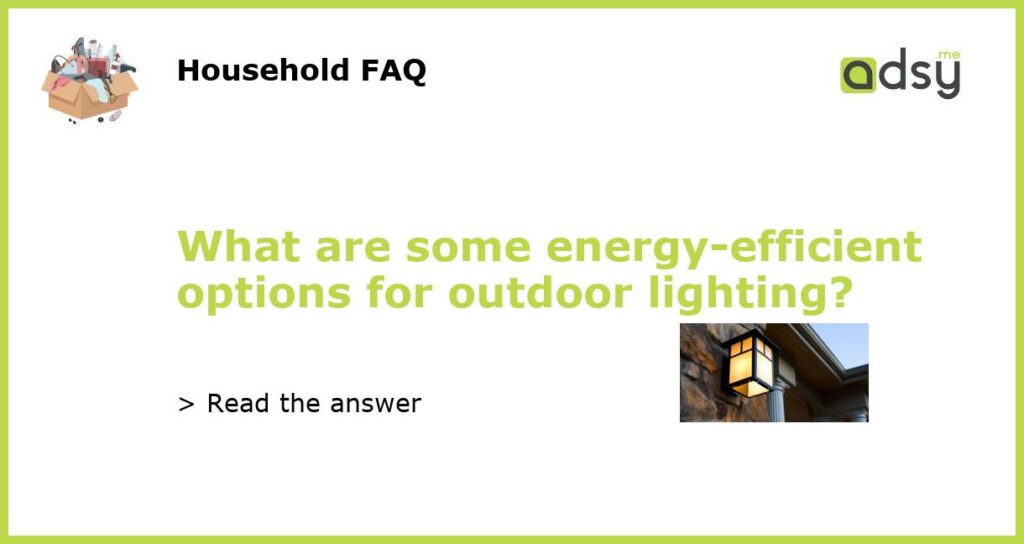LED Lighting
LED lighting is one of the most energy-efficient options for outdoor lighting. LED stands for light-emitting diode, and these lights use a fraction of the energy compared to traditional incandescent or halogen lights. LED lights also last significantly longer, which means you won’t have to replace them as often. This not only saves you money on your energy bills but also reduces the amount of waste going to landfills.
LED lights come in various forms, including spotlights, floodlights, and string lights, making them versatile for different outdoor lighting needs. They are also available in different colors and brightness levels, allowing you to customize your outdoor lighting design. LED lights are also highly durable and resistant to weather conditions, ensuring they can withstand outdoor elements.
Solar-Powered Lights
Solar-powered lights are another energy-efficient option for outdoor lighting. These lights use solar panels to convert sunlight into electricity, storing it in built-in rechargeable batteries. This stored energy is then used to power the lights during the night. Solar-powered lights are easy to install and require no wiring, making them a convenient option for outdoor spaces.
One of the major benefits of solar-powered lights is that they are self-sufficient and do not rely on electricity from the grid. This means they do not contribute to your overall energy consumption or utility bills. Solar-powered lights are also environmentally friendly, as they rely on renewable solar energy instead of fossil fuels.
Motion-Activated Lights
Motion-activated lights are a smart and energy-efficient option for outdoor lighting. These lights are equipped with motion sensors that detect movement within a certain range. When motion is detected, the lights automatically turn on, providing illumination in specific areas only when needed.
By using motion-activated lights, you can minimize energy waste by ensuring the lights are only on when necessary. This is particularly useful for security lighting or pathways where illumination is required only when someone passes by. Motion-activated lights can be set to different sensitivity levels and timing, allowing you to customize their operation to suit your needs.
Timers and Dimmers
Using timers and dimmers is an effective way to enhance energy efficiency in outdoor lighting. Timers allow you to schedule when your outdoor lights turn on and off, ensuring they are not left on unnecessarily during the day. You can set different schedules for weekdays and weekends, adjusting them according to daylight hours.
Dimmers, on the other hand, allow you to adjust the brightness of your outdoor lights. By dimming your lights, you can save energy while still maintaining the desired level of illumination. Dimmers are particularly useful for areas where constant bright lighting is not required, such as outdoor dining or relaxation spaces.
Low-Voltage Lighting Systems
Low-voltage lighting systems are designed to operate at a lower voltage than standard household electrical currents. These systems can significantly reduce energy consumption compared to traditional high-voltage lighting. Low-voltage outdoor lighting typically uses 12-volt power sources, which are safer and more energy-efficient.
Low-voltage lighting systems also provide flexibility in terms of design and installation. They can be used for various types of outdoor lighting, including pathway lights, spotlights, and accent lights. Since low-voltage systems operate at a lower current, they are also safer to handle and less likely to cause electrical hazards.
In conclusion, there are several energy-efficient options available for outdoor lighting. LED lighting, solar-powered lights, motion-activated lights, timers and dimmers, and low-voltage lighting systems are all great choices for reducing energy consumption and minimizing environmental impact. By choosing these energy-efficient options, you can illuminate your outdoor spaces while saving money on energy bills and promoting sustainability.

